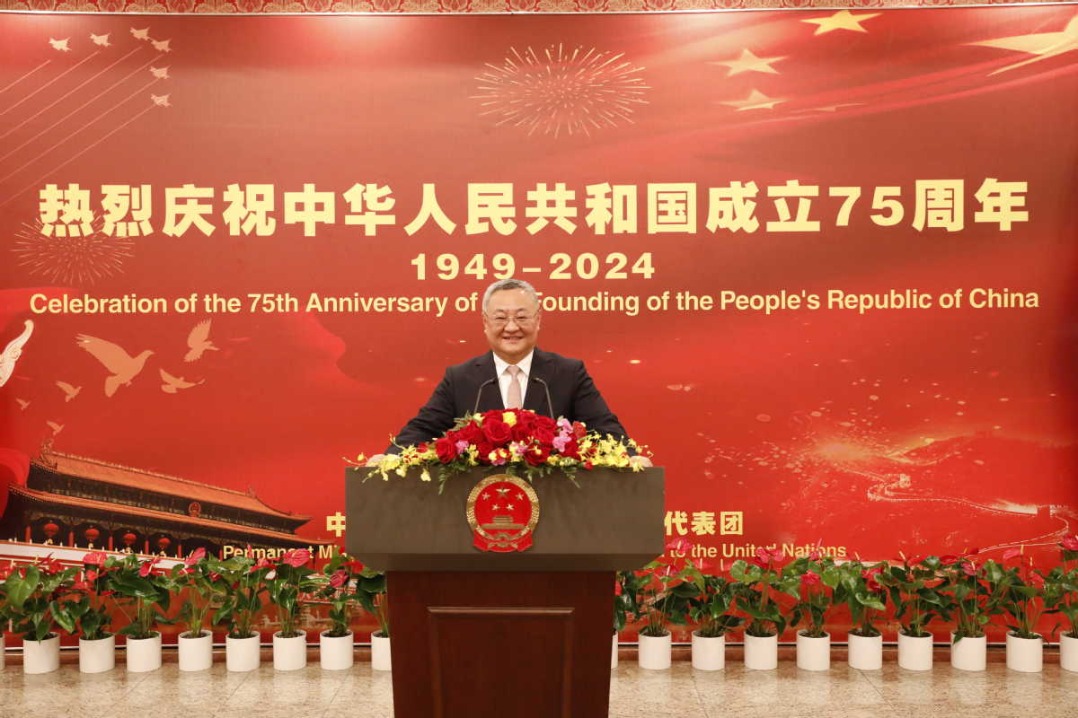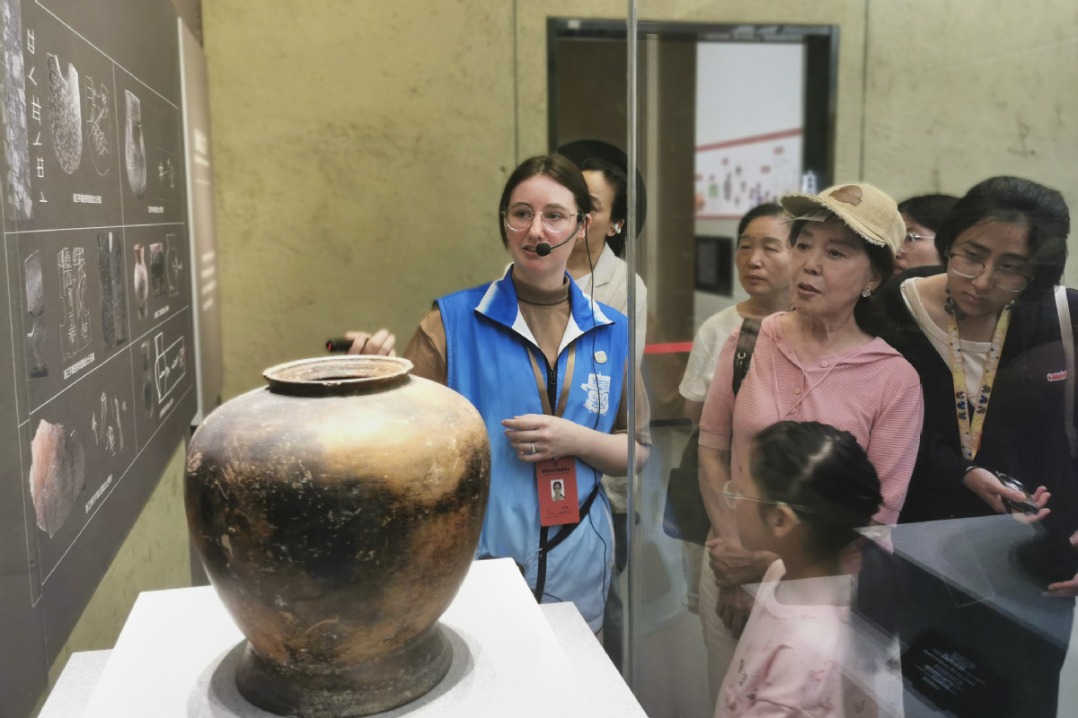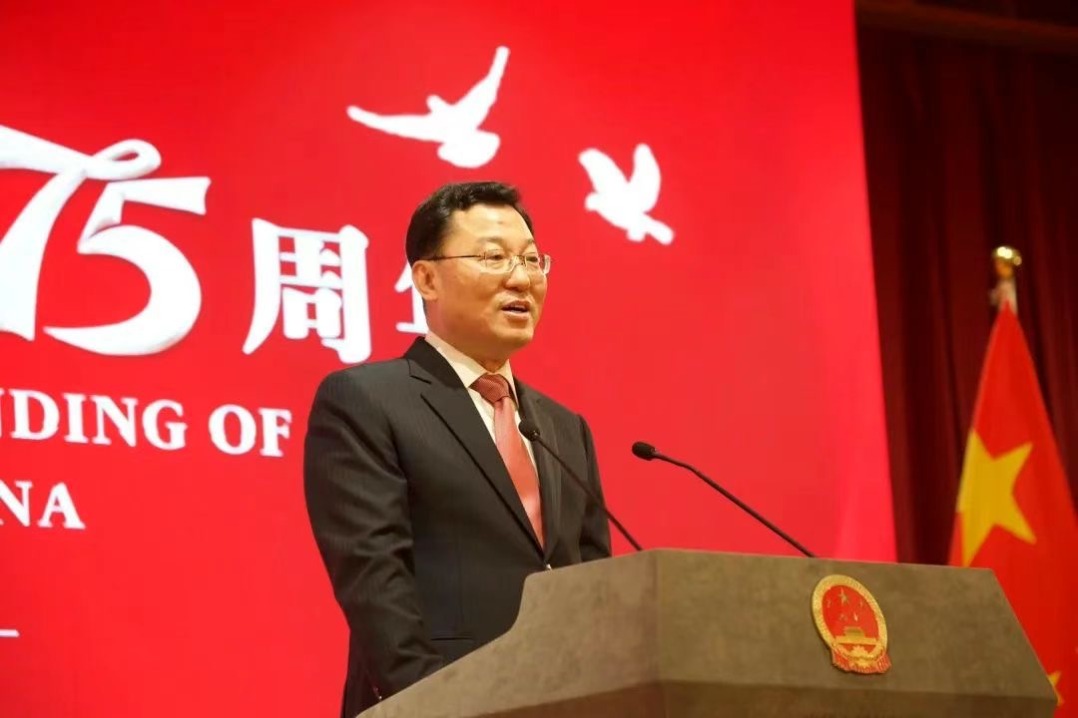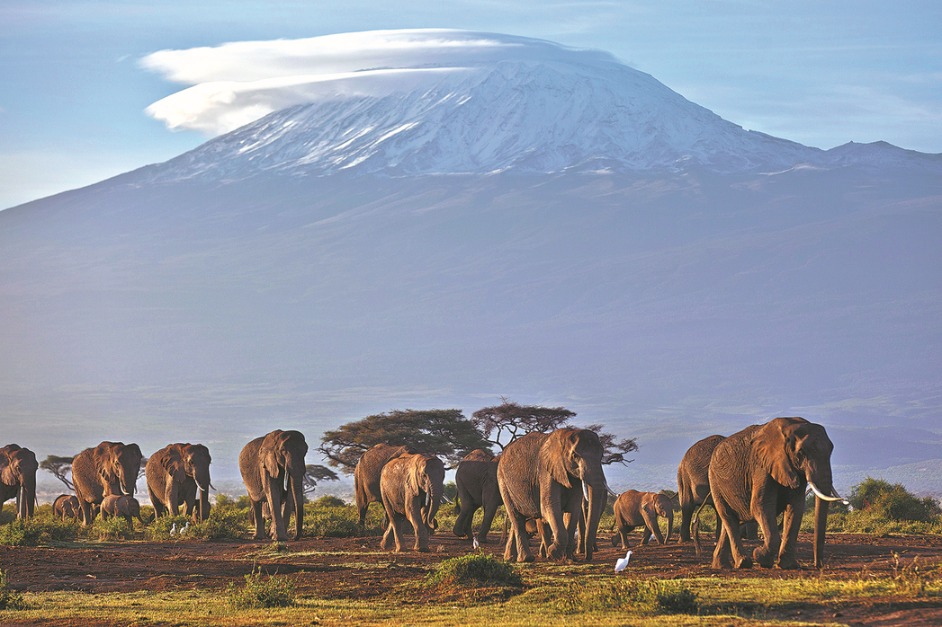The BRI progress, contributions and prospects
China Daily | Updated: 2019-04-23 08:08
II. Contributions
With a view to building a global community of shared future, the Belt and Road Initiative upholds the principles of extensive consultation, joint contribution, and shared benefits. Through the initiative China has made a constructive contribution to the reform of the current global governance system and to economic globalization.
1. Extensive consultation: from a Chinese proposal to a global consensus
Extensive consultation means addressing issues that matter to all through consultation. On the basis of equality and free will, this principle emphasizes equal participation and full consultation in the process, so as to reach consensus in understanding, achieve convergence for cooperation, and develop a focus for common development.
・ Building international platforms for extensive consultation. In May 2017, the first Belt and Road Forum for International Cooperation held in Beijing was a great success. The event was attended by heads of state and government of 29 countries as well as more than 1,600 representatives from over 140 countries and 80-plus international organizations. The forum produced 279 deliverables, involving 76 major items in five key areas. All these achievements have now been implemented. The second Belt and Road Forum for International Cooperation will be held in Beijing in April 2019. The forum has become an important platform for participating countries and international organizations, enabling more cooperation, closer ties, more exchanges, and enhanced mutual trust. In November 2018, the first China International Import Expo was held, attracting 172 countries, regions and international organizations and more than 3,600 enterprises from outside China. At the first Hongqiao International Economic Forum held at the expo, over 4,500 participants from governments, businesses, and academic and research institutions engaged in dialogue and exchanges and voiced their opinions. China has also hosted many large-scale expositions such as the Silk Road International Exposition and the Investment and Trade Forum for Cooperation between East and West China, the China-ASEAN Expo, the China-Eurasia Expo, the China-Arab States Expo, the China-South Asia Expo, the China-Northeast Asia Expo, and the Western China International Fair. These events have become important platforms for consultation and cooperation between China and other B&R countries.
・ Strengthening the role of multilateral mechanisms in extensive consultation. The concerted efforts to build the Belt and Road reflect the trends of the times-peace and development. Upholding the principles of consultation on an equal footing, openness, and inclusiveness, they aim to promote mutually beneficial cooperation among B&R countries on the basis of existing international mechanisms. Applying the principles of mutual respect and mutual trust, China actively engages in substantive coordination and cooperation on the Belt and Road Initiative with other participating countries, fully utilizing existing multilateral cooperation mechanisms such as:
・ G20,
・ APEC,
・ Shanghai Cooperation Organization,
・ Asia-Europe Meeting,
・ Asia Cooperation Dialogue,
・ Conference on Interaction and Confidence-Building Measures in Asia,
・ China-ASEAN (10+1) cooperation mechanism,
・ Lancang-Mekong cooperation mechanism,
・ Greater Mekong Subregion Economic Cooperation,
・ Greater Tumen Initiative,
・ Central Asia Regional Economic Cooperation,
・ Forum on China-Africa Cooperation,
・ China-Arab States Cooperation Forum,
・ China-CELAC Forum,
・ China-CEEC "16+1 cooperation" mechanism,
・ China-Pacific Island Countries Economic Development and Cooperation Forum,
・ World Economic Forum,
・ Boao Forum for Asia.
・ Establishing a track two mechanism for dialogue. Through track two channels such as political parties, parliaments, think tanks, local authorities, NGOs, business communities, the media, and institutions of higher learning, China and other B&R countries can engage in diverse communication, dialogue, exchange, and cooperation, focusing on joint efforts to build the Belt and Road. China has organized the CPC in Dialogue with World Political Parties High-Level Meeting, during which the CPC had extensive communication with political parties from other countries on issues of the Belt and Road. China and other relevant countries have jointly established the Silk Road Think Tank Association, Silk Road Think Tank Network, and University Alliance of the Silk Road. The UK, Japan, the Republic of Korea, Singapore, Kazakhstan and other countries have established research institutions on the Belt and Road and held a variety of forums and symposiums. Universities in China and other countries have jointly established research centers on the Belt and Road, schools for Belt and Road cooperation and development, and training centers, with the aim of cultivating international talent to build the Belt and Road. Through means such as holding media forums, coproducing documentaries, and arranging joint interviews, Chinese and foreign media have strengthened cooperation and exchange, improved their international communication capabilities, and helped the international community to access timely information on joint efforts to build the Belt and Road.
2. Joint contribution: joining forces to build a harmonious international community
Joint contribution means that all the parties are equal participants, builders and contributors, and share responsibilities and risks.
・ Building financing platforms for cooperation. Since opening in 2016, the Asian Infrastructure Investment Bank (AIIB), which was established in accordance with a proposal from China, has played a role of increasing importance in the international multilateral development system. It has won broad trust and recognition from the international community. As of the end of 2018, the membership of AIIB had grown from the 57 founding members to 93, spread across five continents. It had approved loans of US$7.5 billion and leveraged other investments totaling almost US$40 billion. Its 35 approved projects are distributed over 13 countries including Indonesia, Pakistan, Tajikistan, Azerbaijan, Oman, Turkey and Egypt. In fulfilling its own purposes and missions, the bank has become one of the key multilateral platforms for building the Belt and Road, along with other multilateral development banks. In November 2014 the Chinese government pledged US$40 billion to establish a Silk Road Fund, and in May 2017, it announced an additional RMB100 billion contribution to the fund. As of the end of 2018, the contracted investment under the fund had reached about US$11 billion, with actual investment adding up to US$7.7 billion; the fund had also allocated US$2 billion to set up the China-Kazakhstan Industrial Capacity Cooperation Fund. In 2017, the Chinese government established the Public-Private-Partnership mechanism for the Belt and Road, and signed an MoU with the United Nations Economic Commission for Europe, to jointly promote better application of the mechanism in Belt and Road cooperation projects.
・ Actively conducting cooperation in third-party markets. In our efforts to build the Belt and Road, we are committed to promoting open, inclusive, pragmatic and effective cooperation in third-party markets, so as to help Chinese and foreign enterprises utilize their complementary strengths and achieve a "1+1+1>3" all-win result in which the benefits of three-party cooperation are greater than what the parties can produce separately. In 2018 two successful forums were held: the first Forum on China-Japan Third-Party Market Cooperation and the second meeting of the Steering Committee for China-France Third-Party Cooperation. A batch of cooperation projects such as the Hinkley Point C nuclear power station in the UK were put into effect. China's CRRC and Germany's Siemens reached consensus on third-party cooperation in some key projects.
3. Shared benefits: ensuring all parties gain real benefits
Shared benefits mean that we take into consideration the interests and concerns of partners of cooperation, seek a convergence of interests with other countries, and expand common ground, so as to ensure that our cooperation is not only mutually beneficial but is beneficial to all parties. The Belt and Road Initiative is not a zero-sum game which results in the win of one party and the loss of the other. Rather, it is meant for mutual benefits and win-win and all-win outcomes.
・ Bringing China's development achievements to other B&R countries. For several years now, China has accounted for about 30 percent of world economic growth. Through the rapid expansion of its demand for imports, China propels economic growth in the B&R countries that export goods to China. At the same time, China is making a growing contribution to international trade. China's imports in goods and services both account for one tenth of the total global value. In 2018, China imported goods worth RMB14.1 trillion, up 12.9 percent from 2017. Its FDI totaled US$129.83 billion, 4.2 percent higher than 2017, and the percentage of direct investment to other B&R countries grew year by year. Under the cooperation framework of the Belt and Road Initiative, China supports developing countries such as those in Asia, Africa and Latin America to invest more in infrastructure. As a result, the benefits of world economic development are continuously brought to those countries. According to the quantitative trade model of a World Bank study, the Belt and Road Initiative will increase the GDP of East Asian and Pacific developing countries by 2.6-3.9 percent on average.*
* François de Soyres, "The Growth and Welfare Effects of the Belt and Road Initiative on East Asia Pacific Countries", World Bank Group, October 2018 Number 4.
・ Improving people's well-being in other B&R countries. China includes the provision of aid in poverty reduction, agriculture, education, health, environmental protection and other areas into the joint efforts to build the Belt and Road. China has implemented the Program for China-Africa Cooperation on Poverty Reduction and Public Welfare, and pilot projects of the East Asia Cooperation Initiative on Poverty Reduction. It is actively helping countries in the basin of the Mekong River to tackle severe droughts by releasing emergency water supplies. It is also providing technological aid in flood control to Thailand and Myanmar. China signed an MoU with the WHO on health cooperation as part of the Belt and Road Initiative. It has also implemented a program for China-Africa public health cooperation and the China-ASEAN training programs for 100 public health professionals. China has trained several thousand professionals in public health management and disease prevention and control in cooperation with other B&R countries, and has offered free sight rehabilitation surgery to more than 5,200 cataract patients in those countries. Every year, China provides quality medical services to approximately 30,000 patients in neighboring countries. Chinese TCM teams have implemented plans for the rapid eradication of malaria in countries including Cambodia, Comoros, Togo, Sao Tome and Principe, and Papua New Guinea.
・ Facilitating the transfer of scientific and technological innovations to other B&R countries. China has signed 46 agreements on cooperation in science and technology with other B&R countries, and launched China-ASEAN and China-South Asia science and technology partnership programs. It has built five regional platforms for technological transfer with ASEAN, South Asia, Arab States, Central Asia, and Central and Eastern Europe, and proposed and co-established the Alliance of International Science Organizations in the Belt and Road Region. A multilevel and diverse exchange mechanism in science and technology and humanities has been formed through various means, such as short terms of research in China by young scientists and the training of science and management personnel from other B&R countries. In 2018, China hosted 500 young scientists from such countries to carry out research, and trained more than 1,200 science and management professionals. China actively conducts cooperation with other B&R countries in space technology and makes its BeiDou Navigation Satellite System, satellite communication systems and satellite meteorological remote sensing technologies available to them.
・ Promoting green development. Upholding the Paris Agreement, China actively advocates and encourages the integration of green development into the joint efforts to build the Belt and Road. China has signed an MoU on building green Belt and Road with the United Nations Environment Programme, and agreements on cooperation in ecological conservation with over 30 countries along the routes. Since building green Belt and Road has become an important means to implement the United Nations 2030 Agenda for Sustainable Development, more than 100 partners from the relevant countries and regions have established the International Coalition for Green Development on the Belt and Road. In 2016, under China's presidency of the G20, green finance became a key agenda item for the first time. A Green Finance Study Group was set up, which released the "G20 Green Finance Synthesis Report". China has actively implemented the Green Silk Road Envoys Program, and has trained 2,000 people from other B&R countries. It has issued documents such as "Guidance on Promoting Green Belt and Road" and the "Belt and Road Ecological and Environmental Cooperation Plan", with the aim of fulfilling its responsibilities and standards in building green Belt and Road.
4. Vision: building a global community of shared future
The joint efforts to build the Belt and Road reflect humanity's common aspiration for a bright future. More and more members of the international community have identified with the idea of building a global community of shared future advocated by the Belt and Road Initiative. The idea is in harmony with the need for world economic development and the direction of the progress of world civilization.
The initiative is becoming an important platform for building a global community of shared future.
・ Proposed by China but belonging to the whole world. The Belt and Road covers different regions at different stages of development that have different cultures. It is an open and inclusive platform and a global public product forged by all parties involved. Directed toward a shared future for humanity, the Belt and Road Initiative upholds its noncompetitive and nonexclusive nature to the fullest extent. It reflects the international community's demand for a global governance system that is fair, egalitarian, open and inclusive. It is an important public product oriented toward today's world. As UN Secretary-General Antonio Guterres has pointed out, the Belt and Road Initiative and the United Nation's Millennium Development Goals share the same grand goals, and both are public goods offered to the world. The Belt and Road Initiative not only promotes international trade and people-to-people exchanges, but also enhances understanding between countries and reduces cultural barriers, to ultimately achieve peace, harmony and prosperity.
・ Offering a Chinese approach to reforming the current global governance system. Our world today faces challenges such as an insufficient drive for growth, an outdated governance structure, and unbalanced development. Being open and inclusive and aiming for common development, the Belt and Road Initiative transcends differences in social systems and cultures, respects the diversity of world civilization and the coexistence of diverse cultures, and emphasizes mutual complementarity and mutual benefit among countries at different levels of economic development. It focuses on improving conditions and creating opportunities for development, strengthening the drive for development, and sharing the fruits of development. It propels the interaction between global governance, security, and development-an attempt to provide an alternative solution to these issues as they have not been addressed effectively in isolation over long periods of time.
・ Binding together B&R countries to share a common future. We have only one earth, and all countries share the same planet. To meet the various challenges faced by humanity and work for a bright future in which the whole world enjoys peace, prosperity and development, countries across the globe should share the rough times and the smooth and build an open, inclusive, clean, and beautiful world that enjoys lasting peace, common security, and shared prosperity. The concept of a global community of shared future involves combining interests, seeking common feelings, values, and responsibilities, and sharing the benefits of development. The Belt and Road Initiative calls for mutual support and assistance and is informed by equality, cultural affinity, and empathy. It upholds the principles of seeking common ground while reserving differences, inclusiveness, mutual understanding, communication and dialogue, and interactions on an equal footing. We should regard the development of other countries as our own opportunity and promote the convergence of China's development opportunities with those of its B&R partners and other countries in the wider world, so as to ensure that our development benefits both sides of cooperation and all relevant parties. During its four decades of reform and opening up, China has accumulated a wealth of experience that can be used by other countries. It has no desire to export its ideology and no intention to impose its development model on other countries. It is willing to share its experience with other countries and create a bright future together with its B&R partners under the B&R framework.
























